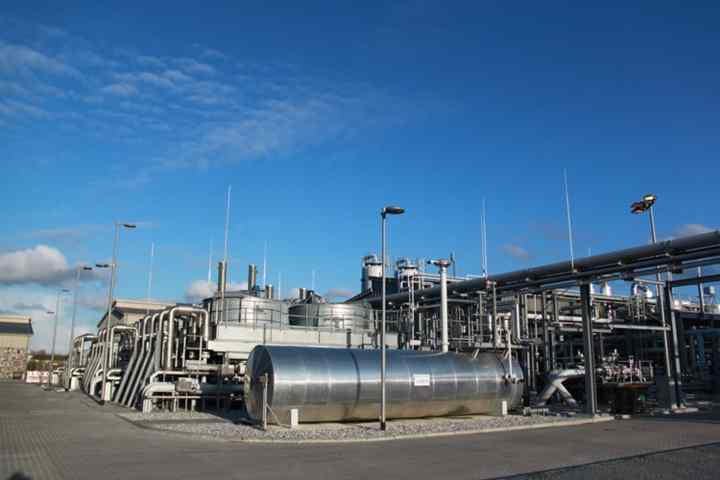
The ambitious new project has been named “brine4power,” and will take form in underground salt caverns that were previously natural gas storage facilities, and even further back in history, were salt mines. All these caves have a volume of 3.5 million cubic feet, which ought to give the resulting battery a capacity of up to 700MWh at an output of 120MW.
So how would the battery work? The massive undertaking would depend upon redox flow technology (which involves filling these caves with a lot of saltwater). These types of batteries work by storing energy as liquid electrolytes. A positive catholyte and negative anolyte are kept apart by a membrane that only lets ions pass through.
When the battery is charging, the ions move to the anolyte, and when it’s discharging, the ions move back to the catholyte. Charged molecules are then pumped into a storage tank, where the energy can be kept safe for future use for months at a time. And the cool thing about the brine4power system is that it stores the electricity in liquid form. While it certainly takes up a lot more space, it’s also pretty powerful — if it works, this salt cavern battery ought to be able to supply 75,000 homes with their power for a day.
“We need to carry out some more tests and clarify several issues before we can use the storage principle indicated by the University of Jena in underground caverns. However, I expect that we will have an operating cavern battery by about the end of 2023,” says Ralf Riekenberg, head of the brine4power project.
If things go according to plan, EWE Managing Director Peter Schmidt says the battery could “fundamentally change the … market for control energy. The amount of electricity this kind of storage facility contains — consisting of two medium-sized caverns — is sufficient to supply a major city such as Berlin with electricity for an hour. It means that we will have built the world’s largest battery.”
Editors' Recommendations
- Next-generation batteries could use material derived from trees
- World’s first 2nm chip could quadruple battery life with a quarter of the energy
- Tesla’s new million-mile battery could finally make electric cars affordable
- Bentley’s first electric car could use cutting-edge solid-state batteries
- New battery design could mean EVs charge in only 10 minutes


